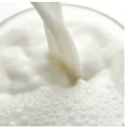Milk Futures
 Today, the largest milk and dairy producers in the world are India, the U.S., Germany, and Pakistan. There has been a steadily increasing demand for milk as developing countries become more affluent. The grading process for milk is very specific, with drastic differences between Grade A and Grade B milk. Grade A farms must be inspected biannually, and the milk must be immediately cooled after milking. Grade B standards are much more lax.
Today, the largest milk and dairy producers in the world are India, the U.S., Germany, and Pakistan. There has been a steadily increasing demand for milk as developing countries become more affluent. The grading process for milk is very specific, with drastic differences between Grade A and Grade B milk. Grade A farms must be inspected biannually, and the milk must be immediately cooled after milking. Grade B standards are much more lax.
Milk Contract Specifications
→ Click Here for Milk Contract Specifications
Milk Facts
In the Unites States, the top three milk-producing states are California, Wisconsin, and Idaho. Most milk produced in the U.S. is produced by Holstein cows. This breed of cow has the ability to produce more milk on average than other breeds.
The milk that is first extracted from cows is called raw milk. For milk to be deemed safe to consume the milk must go through fluid milk processors and then is pasteurized. Milk is used in a variety of dairy products with one third used for cream and fluid milk, while the remaining two thirds are used for other products like cheese. In actuality, over 9 billion pounds of cheese are produced from almost half of the milk stock. Mozzarella and Cheddar are the most popularly produced types of cheese in America today.
Class III Milk futures that are traded on the CME are mainly used in the production of cheese, cheddar in particular. Milk futures can allow traders to address price risk among those involved in the trade of milk and to assess supply and demand of milk for both the current and future outlook.
Source: USDA
Last updated October 2015.